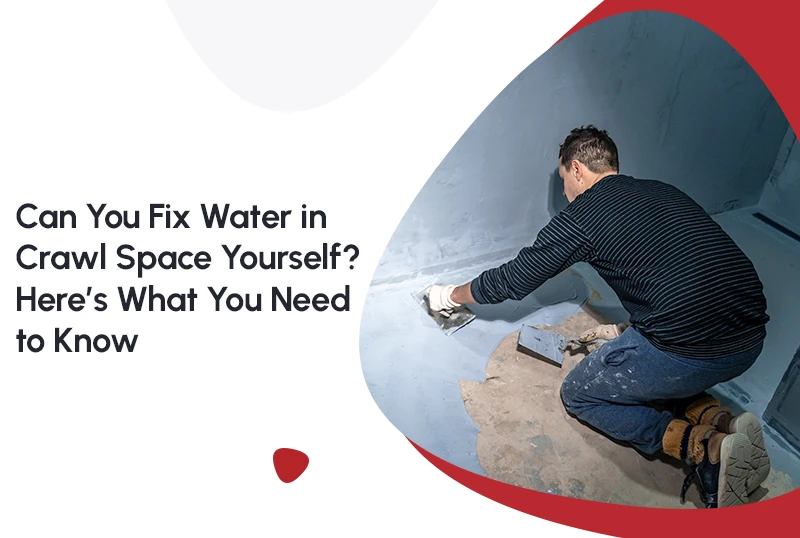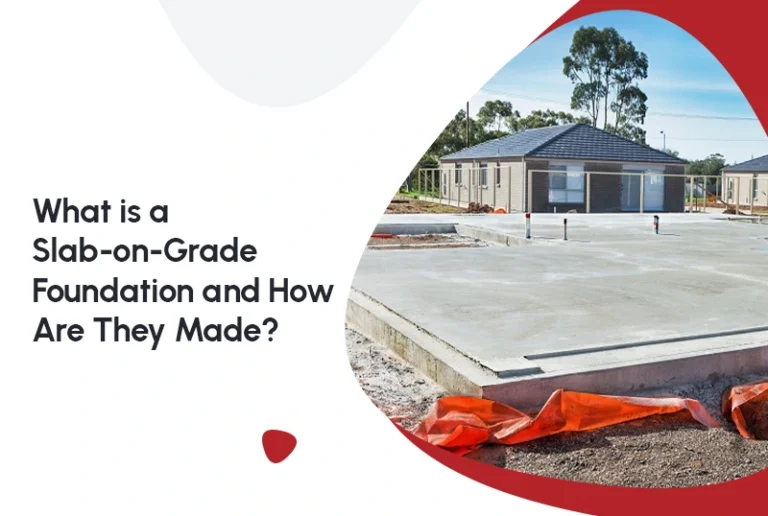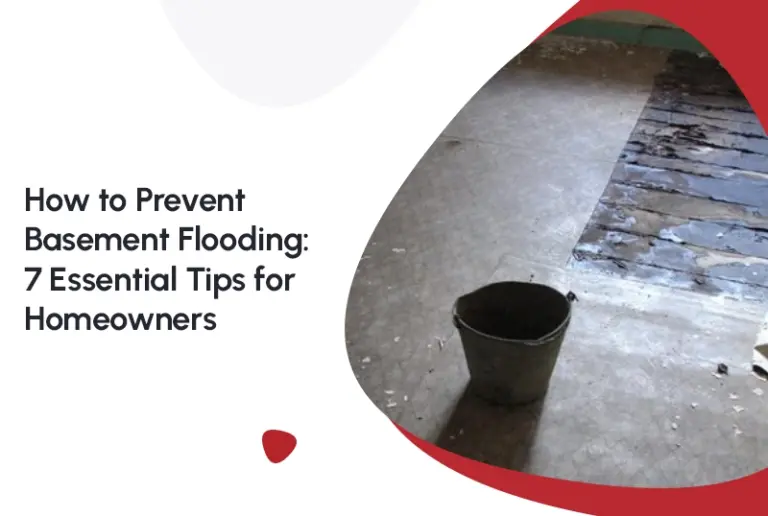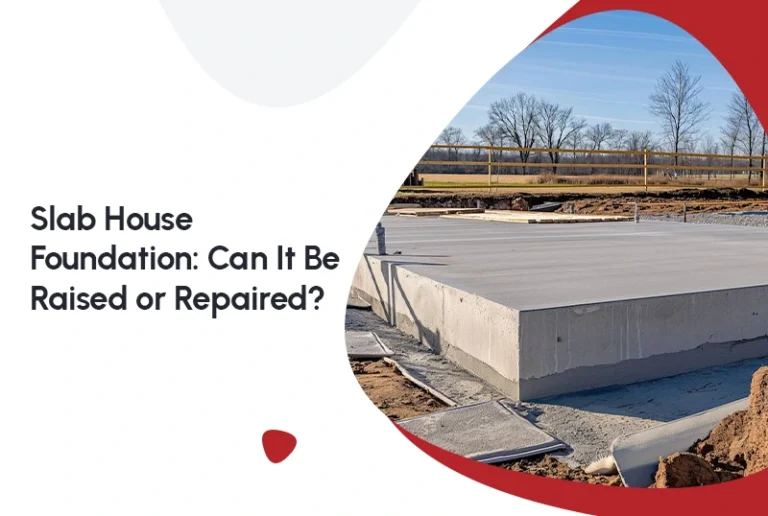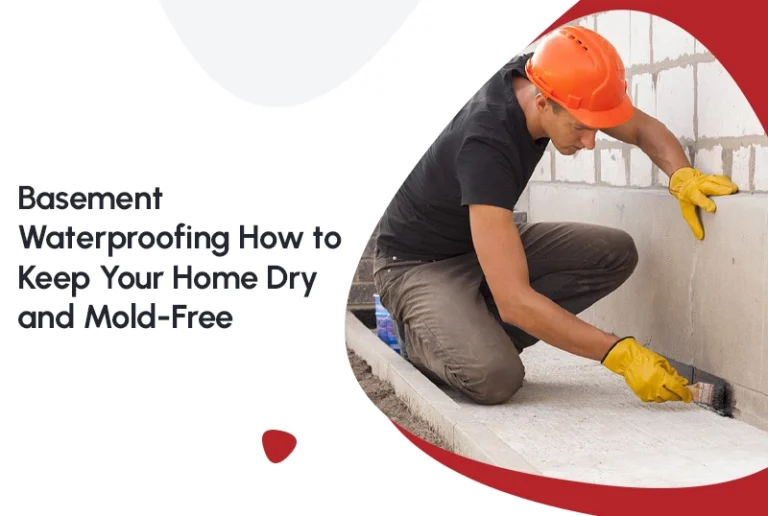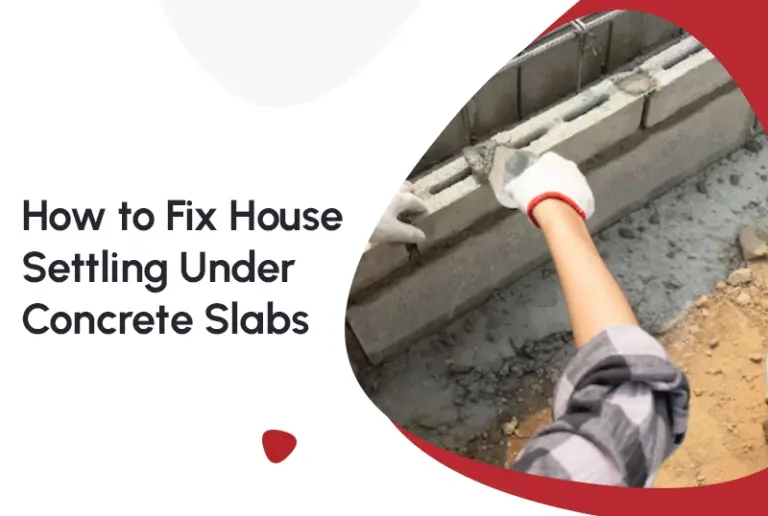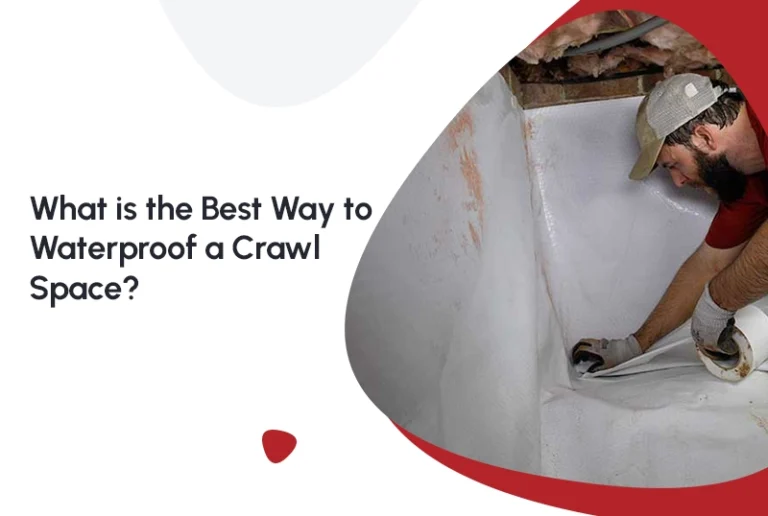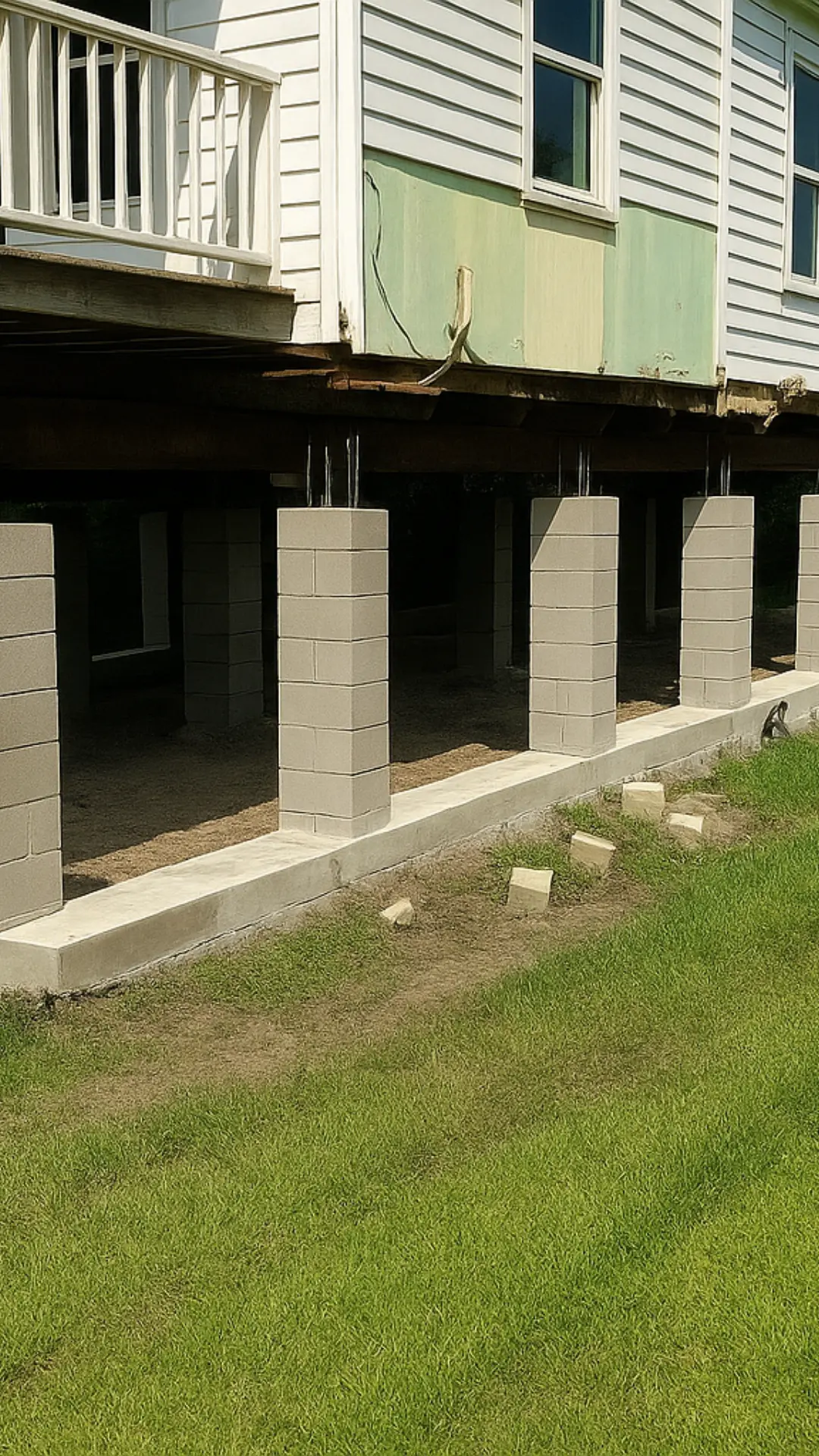If you’ve ever stepped into your crawl space and felt damp, smelled a musty odor, or even noticed standing water, you’re probably asking yourself: Can I fix water in crawl space myself? The short answer is: it depends. Minor issues like small leaks or condensation can sometimes be handled with DIY fixes, but more serious problems may require professional services. Ignoring it can lead to mold growth, wood rot, foundation problems, and even sagging floors that affect your home’s stability.
In this guide, we’ll walk you through what causes water in crawl spaces, the DIY fixes you can try, and when to call the pros. Along the way, we’ll show how understanding your crawl space encapsulation and foundation can prevent expensive repairs and keep your home safe.
Why Water in Crawl Space Can Be Dangerous
Did you know that approximately 47% of homes in the United States experience mold and moisture problems, often originating from the crawl space? It may seem like “just empty space,” but it plays a vital role in your home’s structure. When water accumulates here, it can cause:
1. Mold and Mildew:
Moist environments are perfect for mold growth. Mold spores can easily spread into your living spaces, causing respiratory issues, allergies, and unpleasant odors. A damp crawl space can also increase indoor humidity, which may affect your furniture, insulation, and flooring.
2. Wood Rot:
Water can quickly compromise wooden beams, joists, and floor supports. Over time, this weakens the structure above, causing sagging floors or uneven surfaces. Ignoring wood rot can lead to costly house leveling or structural repairs.
3. Foundation Damage:
Constant moisture softens and erodes the soil beneath your home. This may lead to settling, cracks, or even uneven foundations. In extreme cases, water intrusion can accelerate the need for under slab tunneling or pier installations to stabilize the structure.
4. Pest Infestations:
Wet crawl spaces attract termites, carpenter ants, rodents, and other pests. These unwanted visitors not only cause further wood damage but can also become a health hazard for your family.
Even a small leak can snowball into a major problem, increasing repair costs significantly.
Common Causes of Water in Crawl Space
Before attempting a DIY fix, it’s essential to understand why their is water in crawl space:
1. Poor Drainage:
If your gutters are clogged or the surrounding land slopes toward your foundation, rainwater can pool near your crawl space and seep in. Even a few inches of water can saturate the soil and create long-term moisture problems.
2. Plumbing Leaks:
Pipes running through your crawl space may develop leaks due to corrosion, joint failures, or shifting soil. These leaks often go unnoticed until standing water or damp spots appear, making early detection critical.
3. High Groundwater Levels:
Seasonal rain or poorly drained soil can cause waterIn areas with high water tables or heavy seasonal rains, groundwater can rise and infiltrate your crawl space. Homes without proper drainage or crawl space waterproofing are particularly vulnerable to this issue to seep in.
4. Condensation:
Sometimes, moisture comes from the air itself. High humidity inside the crawl space can condense on cold surfaces like pipes, floor joists, or the ground, leaving the area damp even without any leaks.
5. Cracks in Foundation Walls:
Small cracks in your foundation walls may seem harmless, but during heavy rain, they can act like a funnel, allowing water to seep in and cause significant structural problems over time.
DIY Solutions for Water in Crawl Space
For minor water problems, homeowners can try several DIY solutions before calling a professional. These fixes can be effective if you catch issues early:
1. Clean Gutters and Extend Downspouts
Clogged gutters can overflow and direct water toward your foundation. Make sure gutters are clean and downspouts extend at least 5 feet away from the house.
2. Regrade Around Your Home
Ensure the ground slopes away from the foundation to direct rainwater outward. Even a slight slope can reduce water pooling near the crawl space.
3. Install a Vapor Barrier
Placing a thick plastic sheet on the crawl space floor prevents ground moisture from entering. Overlap seams and secure the barrier to maximize protection.
4. Use a Sump Pump
For small puddles or standing water, a sump pump can remove water and direct it away from the foundation, protecting joists and flooring.
5. Seal Minor Cracks
Small cracks in foundation walls can be filled with hydraulic cement or epoxy. This prevents water from seeping in and causing larger damage.
6. Increase Ventilation
Adding vents or using a dehumidifier reduces condensation, keeping your crawl space dry and mold-free.
For more extensive services, consider crawl space waterproofing, which can permanently protect your home from moisture.
When to Call Professionals
While DIY fixes work for minor issues, some signs indicate that professional intervention is necessary:
- Standing water that keeps returning
- Extensive mold growth
- Damage to beams or joists
- Persistent musty odor despite DIY fixes
- Cracks in the foundation or uneven floors
A professional team can perform crawl space repair and advanced services, including waterproofing, drainage installation, and foundation reinforcement, ensuring long-term safety.
Long-Term Solutions for Serious Water Problems
When water in crawl space becomes a recurring issue, professionals may recommend:
Exterior Waterproofing:
Excavating around the foundation and applying a waterproof barrier.
French Drains or Drainage Systems:
Redirecting groundwater away from the foundation.
Crawl Space Encapsulation:
Sealing the floor and walls with vapor barriers and adding dehumidifiers.
Foundation Repairs:
Fixing cracks, reinforcing joists, or performing structural adjustments like house leveling or under slab tunneling to stabilize the home.
Final Thoughts
So, can you fix water in crawl space yourself? The answer depends on severity. DIY solutions work for minor leaks or condensation, but if water keeps returning, mold spreads, or structural issues arise, it’s time to call the pros.
Don’t wait for water to ruin your home! Contact FNF Foundation today for expert crawl space repair and waterproofing. Protect your foundation, prevent costly damage, and enjoy a dry, safe, and healthy home!
FAQs About Water in Crawl Space
1. Can I fix water in crawl space myself?
Yes, for minor leaks or condensation. But recurring or severe water problems require professional intervention.
2. How long does a DIY crawl space fix take?
Simple fixes like installing a vapor barrier or clearing gutters may take a few hours to a day. Professional waterproofing or repairs can take several days.
3. How do I know if the crawl space problem is serious?
Standing water, wood rot, mold, sagging floors, or foundation cracks are warning signs that you need professional help.
4. Can water in crawl space affect my health?
Yes. Mold and mildew from damp spaces can trigger allergies, asthma, and other respiratory issues.
5. How do I prevent water in crawl space?
Maintain gutters, ensure proper grading, install vapor barriers, use drainage systems, and schedule periodic inspections.
